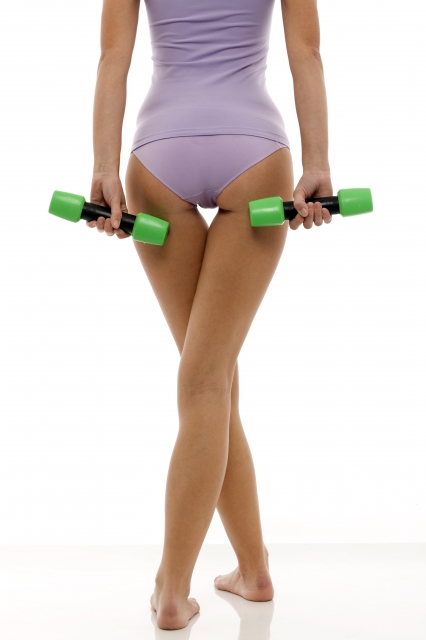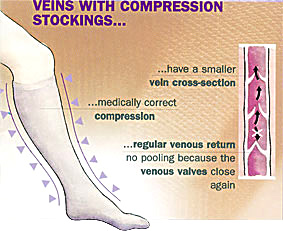 What types of Vein treatments are available?
What types of Vein treatments are available?
We utilize many state-of-the-art modalities to treat veins of all sizes. Dr. Mann will carefully evaluate your condition and formulate an individualized treatment plan. Using the latest diagnostic methods and techniques, we offer our patients the best in minimally invasive microsurgical options. We are dedicated to giving you the care you need to have legs that not only feel better but look better, too. Restoring legs to their healthy, pain-free, good looks is what we do with pride.
The goal of medical treatment is to eliminate venous insufficiency and restore proper venous circulation by eliminating any refluxing veins, varicose veins, and spider veins. The choice of medical treatment depends upon the type, size, location, and depth of the diseased veins.
Conservative Therapy
Conservative treatment refers to non-invasive options such as lifestyle changes (weight loss, exercise, elevating your legs, avoiding long periods of standing/sitting) and wearing compression stockings. The objective of the conservative approach is to support the venous circulation of the legs in order to relief symptoms and slow the development of new diseased veins.
 One of the main treatments for painful varicose veins is support hose or compression stockings. They are special medical grade garments that are tighter at the ankle than at the thigh. These stockings help perform the job that the valves should perform, keeping the backward flow of blood to a minimum. They can help reduce symptoms associated with varicose veins. However, conservative therapy is not corrective—it will not “heal” or “repair” those veins that have already become diseased. Indeed, by the time patients come to see us, they have often tried and failed these conservative measures.
One of the main treatments for painful varicose veins is support hose or compression stockings. They are special medical grade garments that are tighter at the ankle than at the thigh. These stockings help perform the job that the valves should perform, keeping the backward flow of blood to a minimum. They can help reduce symptoms associated with varicose veins. However, conservative therapy is not corrective—it will not “heal” or “repair” those veins that have already become diseased. Indeed, by the time patients come to see us, they have often tried and failed these conservative measures.
During your initial consultation with Dr. Mann, she will likely prescribe compression stockings for you, as most insurance companies require that you try 3-6 months of conservative therapy prior to approval of any medical treatments. Compression stockings can be obtained from various medical supply stores with a physician’s prescription.
Vein Ligation and Stripping
For many years, varicose veins were removed by a surgical procedure known as vein stripping: patients were admitted to the hospital and the surgery performed in the operating room under general anesthesia. All or parts of the vein are tied off and pulled out. Vein stripping procedures are painful, expensive, and frequently ineffective. Fortunately, vein stripping procedures have been replaced by endovenous laser therapy.
Endovenous Laser Therapy (ELT)

An alternative to the stripping operation, ELT is a quick, minimally invasive treatment to close the saphenous vein using laser therapy. It requires no hospitalization and no complicated surgery. The entire procedure is done in our office and takes about 1-2 hours under local anesthesia. Patients are awake during the procedure with minimal to no pain. After the procedure, patients are up walking in 5-10 minutes and back to work or normal activities in 2-3 days.
Performed under ultrasound guidance, ELT uses laser energy to treat the underlying cause of varicose veins by permanently closing off the diseased vein to any future blood flow. A thin laser fiber is threaded into the diseased saphenous vein through a tiny (2mm) incision. The fiber is directed to the uppermost portion of the vein, the laser is activated, and the fiber is withdrawn. The laser gently heats the lining of the vein and safely seals it shut. Your body then naturally uses other healthy veins to return blood from the heart.
Why choose Endovenous Laser Treatment for your Varicose Vein?
- Most comfortable procedure available
- Rapid relief of symptoms
- Quick, office-based procedure
- No general anesthesia
- Resume normal activities within 1-2 days
- Great cosmetic outcome with minimal bruising, swelling and scarring.
Ambulatory Micro-Phlebectomy
This microsurgical technology removes large, bulging varicose veins using local anesthesia and requires little recovery time. Affected veins are delicately pulled up and removed through tiny 2mm incisions that are barely visible when healed.
Recovery is almost immediate; patients can walk right out of the office. Postoperative pain is minimal and can be controlled with a mild pain reliever. Mild bruising will appear, but usually resolves within a few weeks. Most patients are back to work and their normal activities in 1-2 days.
Sclerotherapy
Sclerotherapy is a microinjection procedure that safely treats small varicose veins and spider veins. It requires no pain medication or surgery. Abnormal veins are removed by injecting a solution called Sotradecol, which irritates the vein wall, causing it to close up. Other veins then take over its work.
A single sclerotherapy treatment session may involve one to many injections. The number of treatment sessions needed varies greatly and depends on the type and number of veins treated, as well as the level of cosmetic perfection desired. Bruising and pigmentation will occurs after sclerotherapy. Bruising usually disappears in one to two weeks. Although pigmentation almost always fades completely, it can last for several months. Scarring and other complications have been reported, but are quite rare.
How Do Treatments Help?
Once the diseased varicose veins are removed, your venous circulation will actually be improved. The blood that was pooled in the varicose and spider veins is no longer stationary. Without the stagnant blood engorging the varicose and spider veins, your legs should feel less tired and heavy, and any swelling you may have been experiencing should be reduced.
Will My Varicose and Spider Veins Come Back?
Once a varicosity or spider vein has been adequately treated, it is gone forever and will not reappear. It is most people’s genetic tendency, however, to form new varicosities and/ or spider veins in other areas or even in areas that were previously treated. Early treatment for any new areas will reduce the amount of treatment needed to maintain a healthy venous return.
Learn More
About Dr. Margaret Mann
Dr. Margaret Mann is a board certified Dermatologist and Fellowship Trained Dermatologic Surgeon and Vein Specialist. She is the Director of Aesthetic Dermatology at University Hospitals Case Medical Center. Dr. Mann graduated from Stanford University with top honors. She received her medical education and dermatology training at Washington University School of Medicine. Dr. Mann then completed a fellowship in Mohs, Cosmetic, and Venous Surgery at the Center of Dermatologic and Cosmetic Surgery at Washington University, focusing on minimally invasive surgery techniques. Prior to joining University Hospitals, Dr. Mann was the Co-Director of Dermatology Surgery and Chief of Clinical Services in the Department of Dermatology at University of California, Irvine. She is a member of the American Academy of Dermatology and the American College of Phlebology. She has authored multiple textbooks and journal articles on dermatologic and vein surgery. Dr. Mann lectures nationally to physicians on venous disease.
